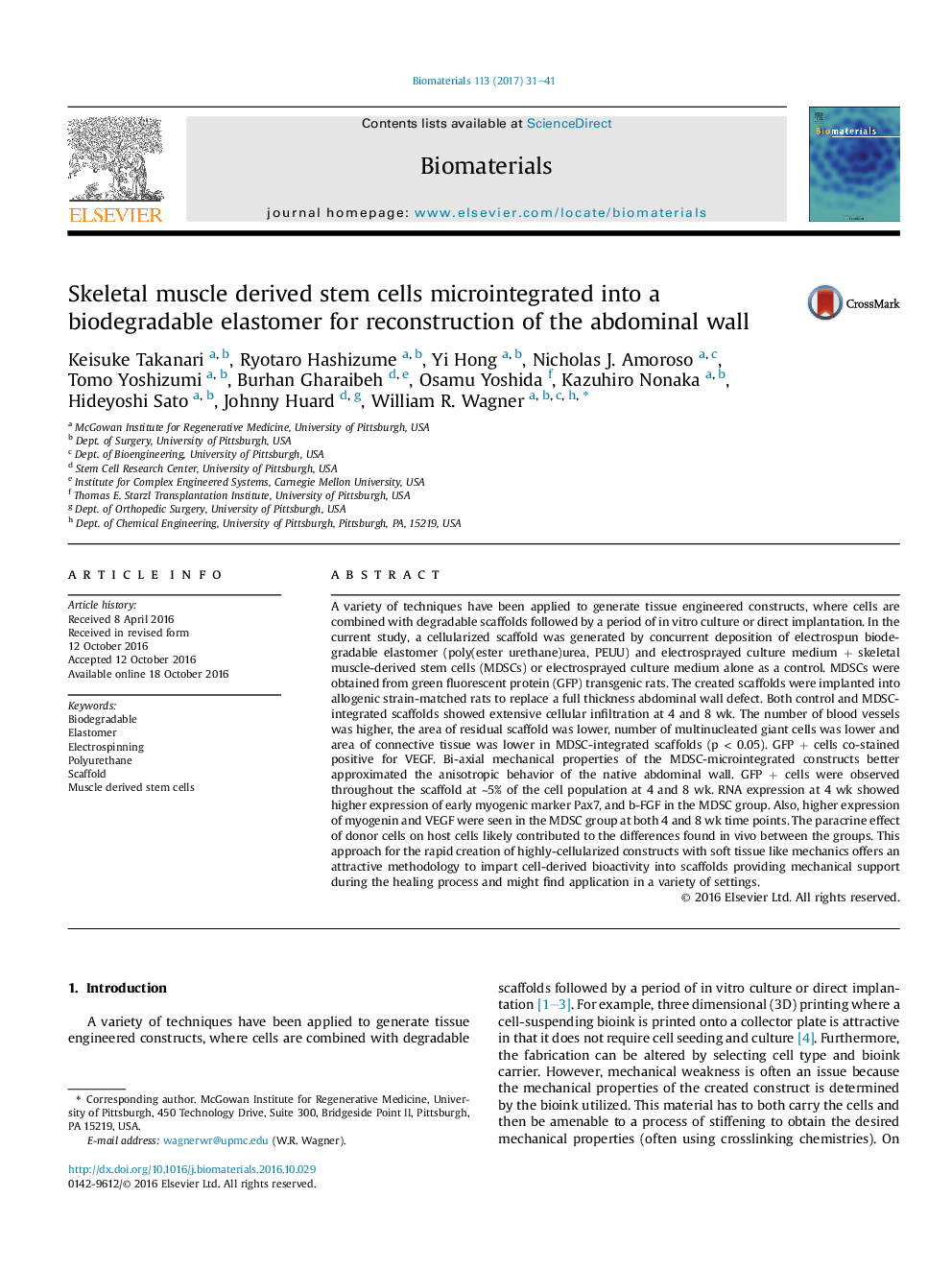| Article ID | Journal | Published Year | Pages | File Type |
|---|---|---|---|---|
| 6451040 | Biomaterials | 2017 | 11 Pages |
A variety of techniques have been applied to generate tissue engineered constructs, where cells are combined with degradable scaffolds followed by a period of in vitro culture or direct implantation. In the current study, a cellularized scaffold was generated by concurrent deposition of electrospun biodegradable elastomer (poly(ester urethane)urea, PEUU) and electrosprayed culture medium + skeletal muscle-derived stem cells (MDSCs) or electrosprayed culture medium alone as a control. MDSCs were obtained from green fluorescent protein (GFP) transgenic rats. The created scaffolds were implanted into allogenic strain-matched rats to replace a full thickness abdominal wall defect. Both control and MDSC-integrated scaffolds showed extensive cellular infiltration at 4 and 8 wk. The number of blood vessels was higher, the area of residual scaffold was lower, number of multinucleated giant cells was lower and area of connective tissue was lower in MDSC-integrated scaffolds (p < 0.05). GFP + cells co-stained positive for VEGF. Bi-axial mechanical properties of the MDSC-microintegrated constructs better approximated the anisotropic behavior of the native abdominal wall. GFP + cells were observed throughout the scaffold at â¼5% of the cell population at 4 and 8 wk. RNA expression at 4 wk showed higher expression of early myogenic marker Pax7, and b-FGF in the MDSC group. Also, higher expression of myogenin and VEGF were seen in the MDSC group at both 4 and 8 wk time points. The paracrine effect of donor cells on host cells likely contributed to the differences found in vivo between the groups. This approach for the rapid creation of highly-cellularized constructs with soft tissue like mechanics offers an attractive methodology to impart cell-derived bioactivity into scaffolds providing mechanical support during the healing process and might find application in a variety of settings.
